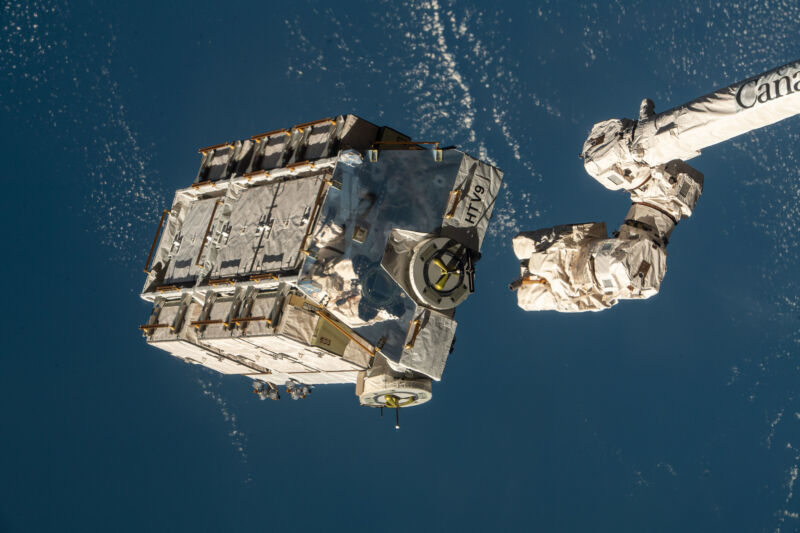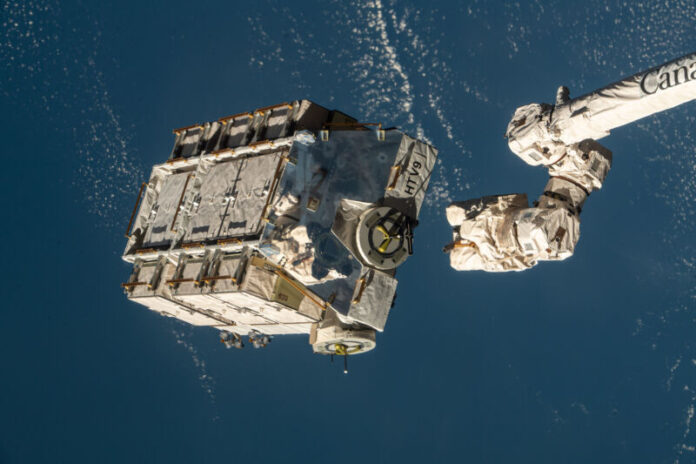
Enlarge / In March 2021, the International Space Station's robotic arm released a cargo pallet with nine expended batteries. (credit: NASA)
A bundle of depleted batteries from the International Space Station careened around Earth for almost three years before falling out of orbit and plunging back into the atmosphere Friday. Most of the trash likely burned up during reentry, but it's possible some fragments may have reached Earth's surface intact.
Larger pieces of space junk regularly fall to Earth on unguided trajectories, but they're usually derelict satellites or spent rocket stages. This involved a pallet of batteries from the space station with a mass of more than 2.6 metric tons (5,800 pounds). NASA intentionally sent the space junk on a path toward an unguided reentry.
Naturally self-cleaning
Sandra Jones, a NASA spokesperson, said the agency "conducted a thorough debris analysis assessment on the pallet and has determined it will harmlessly reenter the Earth’s atmosphere." This was, by far, the most massive object ever tossed overboard from the International Space Station.
Read 18 remaining paragraphs | Comments
Ars Technica - All contentContinue reading/original-link]




